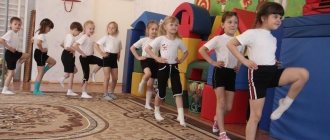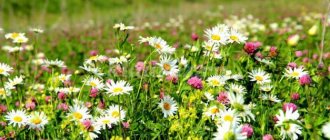Plants in a kindergarten group, in addition to aesthetic ones, also have a number of educational functions. Children learn to care for plants, understand the relationships in nature, and bear responsibility.
When designing a corresponding corner of nature in a group, the following requirements must be strictly observed:
- Plants must be safe (this was stated in previous sanitary and epidemiological requirements. In the current SanPiNs, the phrase about plant safety has been removed as a matter of course). Moreover, if one of the preschoolers is allergic to any plant, then it should be removed immediately.
- The group should have plants that preschoolers can be involved in caring for. Starting from the age of three, children are actively involved in the process of caring for flowers.
- Plants should be attractive to hold the attention of preschoolers.
- The flowers selected for the corner in the group must belong to the ecosystem in which the preschool is located. As a rule, these are unpretentious plants that are easy to care for.
- Plants should be presented in several copies so that children can form an objective idea of a particular plant species.
Specific tasks and plant species are prescribed in the educational program. For example, in the main “Program of Education and Training in Kindergarten” edited by M.A. Vasilyeva (hereinafter referred to as the Program), which is chosen as a priority by more than 50% of preschool institutions, provides a clear description of the responsibilities of preschoolers and the tasks of educators in certain age groups. In our article we will rely specifically on this Program.
Plants in the 2nd younger group
The program prescribes:
- Introduce indoor plants (ficus, geranium).
- Give an idea that plants need soil, water and air to grow.
So far, children’s acquaintance with plants occurs at the simplest level. Children learn to recognize several types of plants by their characteristic features (leaf shape, color, smell), and distinguish between their parts (stem, leaf, flower).
From the age of three, children are actively involved in caring for plants. Teachers pour water into watering cans. Kids learn to hold watering cans correctly, water plants in a kindergarten group, and wipe large plants with a damp cloth.
At this age, preschoolers are attracted to bright colors. For a corner of nature, long-flowering plants are chosen, such as: common geranium, ficus, fuchsia, ever-flowering begonia, camellia, Chinese rose, balsam. The number of species does not exceed three or four.
Project in kindergarten in the 2nd junior group on the topic: Flowers
Project in the 2nd junior group “Flowers”.
It will be useful and interesting for teachers, educators, and creative people. The beauty of the world around us is so diverse and beautiful. To be able to enjoy the beauty of nature, you need to try to preserve and increase the wealth of flora. Flowers are not only beauty, but also part of living nature that must be preserved and protected.
Goal: to expand children’s knowledge and understanding of the flowers growing in the flower garden of our kindergarten, as well as the beneficial properties of flowers; create conditions for increasing the creative activity of children; develop imagination, thinking, communication skills; cultivate a caring attitude towards nature. Objectives: Educational:
to cultivate a caring attitude towards the surrounding nature, to show students the beauty of nature’s flowers.
Educational:
to form in children an idea of the flowers growing in the flower garden, to teach them to enjoy the beauty of fresh flowers;
introduce children to unconventional drawing techniques, teach new ways of drawing (drawing with lids); introduce the medicinal properties of flowers. Developmental:
develop children's creative abilities through various types of creative activities, love of drawing, imagination, curiosity, observation.
Author of the project: Kolibabchuk M.A.-educator. Project type: information and research, creative. Type of project: group. Project duration - 1 week Participants: teacher, children of the 2nd junior group. Venue: GBDOU YaSOT No. 10 “Iskorka”, Stakhanov. Dates : from July 9 to July 13, 2022. Age of children: 3-4 years. Form of implementation : reading fiction, learning poetry, discussing proverbs, unconventional drawing with “Malva” lids, looking at illustrations, albums on the topic, excursion to the flower garden of the kindergarten, herbal medicine “Chamomile decoction” stage 1. Preparatory. Introducing children to the topic of the project. Goal setting. Preparation of materials for the project. Stage 2. Basic. Organization of project activities. Game activity. “Fold it and tell it.” Each child is given a “Flower” allowance and is asked to arrange flowers (like a puzzle). After finishing the work, the teacher asks the children questions: - What is the name of the flower? - What colour? - What size are the leaves of the flower - large or small? - What shape? Then the children finish the phrase started by the teacher: - This is one red poppy, and there are many ... (red poppies) in the meadow. - This is one yellow dandelion and there are many in the meadow... - This is one blue bell, and there are many in the meadow... - This is one white daisy, and there are many in the meadow... Children, look, every flower has a root, it feeds the whole plant. The flower uses it to “drink” water from the ground. This is what a beautiful bouquet we got, and how fragrant it smells. Let's take a deep breath of this wonderful aroma! Breathing exercises “Ah! What a smell!” The teacher invites the children to take a deep breath and say the sentence: “Ah! What a smell! Then exhale slowly. The round dance game “The Scarlet Flower” is being held
A scarlet flower, like a light (children walk in a round dance) One, Two, Three - turn around, Alena. (the named child turns his back in a circle) The game continues until the last child turns around. Then the children walk with their backs in a circle and say this: Scarlet flower, like a little light One, two, three, four. five - everyone turned around again! (all children turn to face in a circle) Game “Ball in a Circle” Materials: ball. How to play: Children stand in a circle and throw the ball to each other, naming the flower; if the child cannot remember the name of the flower, he drops out of the game. Artistic and speech activity. Reading and memorizing poems: Daisies are running across the field (A. Barto) In the world of flowers (L. Kuzminskaya) Wreath (Z. Aleksandrova) Children like flowers (N. Samonii) How did dandelions appear (E. Prikhodko) How did daisies appear? (V. Orlov) Summer rose (A. Apukhtin) Poppy (E. Feyerabend) No need to pick flowers from the flowerbed (M. Lvovsky) Dandelion (Z. Alexandrova) Rose (S. Marshak) Flowers (A. Fet) Reading stories: - N. Pavlova. “Yellow, white and purple” - M. Prishvin “Golden Meadow”
Artistic and aesthetic activities. Goal: to develop the creative abilities of children, to introduce them to unconventional methods of drawing, to teach them to finish what they have started, and to instill accuracy in their work. — Drawing in an unconventional way with “Malva” lids; -Applique “Chamomile”; - Herbal medicine “Chamomile decoction” Purpose: to draw attention to the variety of flowers, to show their value and significance for human life and other living beings, to expand knowledge about the beneficial properties of chamomile. Stage 3. Final. • Exhibition of books, photographs and illustrations “Such different flowers” • Organization in the group of an exhibition of children’s works “Flowers-flowers” Excursion to the flower garden of the kindergarten. Puzzles. •I am capricious and tender, I am needed for any holiday. I can be white, yellow, red, But I always remain beautiful! (Rose) •There is a little curl in the garden - White shirt, Golden heart. What it is? (Chamomile) •White peas On a green stem. (Lily of the valley) •I am a fluffy ball of white in a clean field, and the breeze blew - a stalk remained. (Dandelion) •In the garden, on the path, under my window Today the sun bloomed on a high leg (Sunflower) •From a green chicken, Entirely covered with fluff, I become a proud Scarlet Cockerel! (Poppy) •Near the snow-covered hummocks, Under the white snow cap, We found a small flower, Half-frozen, barely alive. (Snowdrop) •This blue flower Reminds you and me of the clear, pure sky, And the radiant sun (Forget-me-not) •The little blue bell hangs, It never rings. (Bell) •This blue flower reminds you and me of the sky - pure, pure, and the radiant sun! (Forget-me-nots) •I’ll spend the whole day in the winter garden. I'll grab some watercolors. I’ll draw... (Pansies) •Near the winding path the sun is growing on a leg. When the sun ripens, there will be a handful of grains. (Sunflower) •The first to get out of the earth On the thawed patch. He is not afraid of frost, even though he is small. (Snowdrop) •I am beautiful in a wedding bouquet, And in a garden where nightingales whistle. All year round in many countries of the world I serve as a declaration of love. (Rose) •Grew from an onion, But it’s not good for food. It looks like a bright glass. It looks like a flower. (Tulip) Finger gymnastics “Flowers grow in the meadow.” Flowers of unprecedented beauty grow in the meadow. Hands on the table in a vertical position resting on the elbows, fingers open.
Flowers are reaching out to the sun, and you too can reach out to them.
Stretching - arms up.
The wind blows sometimes, but that's not a problem.
Wave your arms to imitate the wind.
The flowers bend down and drop their petals.
Tilt your hands.
And then they get up again and still bloom.
Straighten your hands, fingers open. Finger gymnastics “Every bud”. Each bud would be happy to bow down. Put your elbows on the table, the fingers of both hands are gathered into a pinch - “buds”.
Left and right, forward and backward.
Swing the “buds” left and right, back and forth.
From the wind and heat, these buds
join the elbows and palms of the hands together, forming one large “bouquet”,
hidden alive in a flower bouquet.
Finger gymnastics “Flowers”. Our delicate flowers open their petals. Raise your hands up, resting on your elbows, fingers clasped together, open your fingers.
The breeze breathes slightly, the petals sway.
Smooth swinging of open fingers left and right.
Our scarlet flowers cover their petals.
Gather the fingers of both hands into a pinch.
They quietly fall asleep, shaking their heads.
Smooth swinging of the fingers, collected in a pinch, left and right.
Summary of a lesson on non-traditional painting with “Malva” lids.
Goal: to teach children to draw in an unconventional way of drawing with lids. To instill a love for fresh flowers, teach to admire the beauty of living nature. Learn to draw flowers in a new way of depicting: with a lid print. Develop fine motor skills, imagination, creativity. Evoke positive emotions from the work done. Cultivate a love for nature. Materials: white paper, water, napkins, gouache paint, plastic bottle caps. Preliminary work: examining illustrations of mallow, examining mallow in the flower garden of a kindergarten.
Progress of the lesson: Guys, I want to introduce you to the flower that you saw in our flower garden. This is the Malva flower. I will tell you a story about this beautiful flower. A hunter once got lost in a deep forest. Tired, he sat down and looked into its depths and listened to the woodpecker knocking, as if time was ticking away. The hunter became sad. He sits and thinks: “I am alone in the forest and in my life. I have long lost my way and there is no end to my wanderings. Complete loneliness, languor and death. But for some reason I was born, for some reason I came into this life, and into this forest?... I find no satisfaction either in my search or in the animals and birds I have hunted. Now I’m lost and there’s no way out at all...” And suddenly, a light flashed between the trees, the Hunter saw a blue shadow, the silhouette resembling a tall, slender girl, who waved a handkerchief at him. He stood up and felt a touch on his shoulder. He looked around, and in front of him was a hunched old woman standing. The old woman has unkind eyes, gloomy. Dressed in an expensive, but very shabby dress. - Listen, Good fellow, on the other side of the waterfall there is a place - pure Paradise! Once you get there, you will forget all your sorrows. You won’t find the way there alone, but I will guide you, since I know all the paths and live there. You must carry me to the other side, because I cannot withstand the pressure of the current. The Hunter took pity on the old woman and lifted her to her feet. The Hunter’s eyes darkened, he felt such an unbearable heaviness, he began to sway. I thought that the old lady was a hundred years old, maybe more, she had endured a lot throughout her life, I needed to help her. And between the trees someone seems to be waving a handkerchief again. The Hunter stepped into the cold water, took a step or two, and our weight did not become so heavy, and then it became completely easier. And it seemed to him that the handkerchief was glowing closer and closer. Here is the shore already. The Hunter came out and saw that the Malva flower was standing in front of him, and instead of the old woman, a beautiful Girl was hugging him. And the Girl took him to his native place. Since then the Hunter has lived happily. The teacher first draws the leaves and stem of the flower. Children place imprint caps on both sides of the stem. Make circular prints using a plastic cap on a piece of paper. Results.
Summary of a lesson on the application “Chamomile” for children 3-4 years old Volumetric application for children 3-4 years old “Chamomile”
Grubin F. “Daisies”
White sister daisies, Daisies have white eyelashes.
They dance in the summer meadow. How similar they are to each other! The wind boy blows a pipe, He dances a polka with daisies. The wind will dance and fly away: You never know how many daisies there are in the world! To make daisies we will need: • colored paper; • White paper; • scissors; • glue; • ruler; • a simple pencil. We take white paper and draw it into strips (0.8-1 cm). The teacher cuts the paper into strips and cuts out the middle of the flowers. We make the middle of a daisy from yellow paper, draw circles and cut it out. We make chamomile petals from strips of white paper by gluing the ends of the strips. (Children do this) Children glue white stripes to the yellow circle.
Herbal medicine “Chamomile decoction” Chamomile has long been known as a medicinal plant with a wide spectrum of action. It has emollient, enveloping, antispasmodic, disinfectant, anti-inflammatory properties. Due to the presence of such an extensive list of healing properties, chamomile can be used in the treatment of many diseases. To prevent diseases of the upper respiratory tract and colds, herbal medicine was organized for the children of my group during a walk.
To prepare an infusion of chamomile: 1 tablespoon of flowers, which is poured with 1 glass of boiling water. After this, leave the composition in a sealed container for 30 minutes, then filter. I added a little sugar to make it tastier for the kids. Project results.
We recommend watching:
Project for the junior group of kindergarten on the topic: Fairy Tales Project for the junior group of kindergarten. Vodichka Project for the younger group of kindergarten. Theatrical activity Quiz game for children 5-7 years old on the topic: Flowers
Similar articles:
Games about flowers for preschool children 5-7 years old in kindergarten
Riddles about flowers for children 6-7 years old with answers
Ekaterina Serova “Lawn”
Plants in the middle group
The program prescribes:
- To consolidate knowledge about herbaceous and indoor plants (impatiens, ficus, chlorophytum, geranium, begonia, primrose and others), ways to care for them.
- Expand children's understanding of the conditions necessary for the life of people, animals, plants (air, water, food, etc.).
From the age of 4, children learn to see a variety of properties and qualities. They can more easily identify the characteristics of plants and understand the processes that are necessary for the life of flowers.
Children's help is becoming more structured. They learn to water plants in the kindergarten group with a fine mesh watering can, spray with a spray bottle, clean drooping leaves with a dry brush, and clean leaves with a damp cloth or a jagged brush. Preschoolers are already able to independently determine whether a plant needs watering or not, based on the color of the soil (if the soil is dry, it needs to be watered, if the soil is dark, the plant does not need watering).
To the variety of plant species from last year's group are added: aloe or agave, begonia rex, fragrant geranium, zonal geranium, aspargus.
What flowers should be in the early age group?
In the corner of nature of the younger groups, plants are placed that have clearly defined main parts (stem, leaves) and bloom brightly, abundantly and for a long time. These are ordinary (or zonal) geranium, fuchsia, ever-flowering begonia, impatience (“light”), azalea, Chinese rose, etc.
Interesting materials:
How long should peeled vegetables be kept in water? What time does the Holy Fire descend? How long does it take to apply a hemostatic tourniquet? What time of day is best to take liver medications? What time of day can you eat apples? What time of day does plant respiration occur? How long does it take to issue a Sberbank credit card? What tense does the verb have? What tense is the verb asking? What is the tense of the verb saw?
Plants in the older group
The Program stipulates:
- Continue to introduce indoor plants.
- Learn to care for plants.
- Describe methods of vegetative propagation of plants.
Children's knowledge becomes more in-depth. Preschoolers are taught what a plant needs to grow, which can lead to its death. Children learn to determine how to care for plants based on the appearance of the stem and leaves. A new topic is plant propagation vegetatively, using stem cuttings.
Five years is the age at which a child can care for plants independently, without prompting from a teacher.
Some of the plants from last year are distributed to parents or given to a younger group. At the same time, their place can be taken by plants with various stems (creeping, climbing), having bulbs: tradescantia, climbing ivy, cactus, cyclamen, primrose, amaryllis, clivia, indoor grapes.
Plants in the preparatory group
The program prescribes:
- Concretize children's ideas about the living conditions of indoor plants.
- Introduce methods of their vegetative propagation (cuttings, leaves, tendrils).
- Learn to establish connections between the state of the plant and environmental conditions.
- Introduce medicinal plants (plantain, nettle and others).
Children are taught about the seasonality of plants, the main stages of their growth and development, and the patterns of propagation using leaf cuttings.
Plants that are radically “opposite” in their needs are added to the corner: cactus and Uzambara violet - on the one hand (plants that do not need constant watering), and papyrus, tradescantia, primrose - on the other hand (plants that need constant watering) .
Author: Maria Danilenko.



